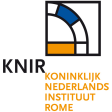Summary
- The data presented here were collected in the course of archaeological survey and excavation in the region of Shkodër in northern Albania, carried out between 2010 and 2014, with a follow-up visit in 2016. The Projekti Arkeologjik i Shkodrës (PASH) was co-directed by Michael L. Galaty (University of Michigan) and Lorenc Bejko (University of Tirana) and was sponsored by the United States National Science Foundation (NSF BCS1220016), The University of Tirana, Millsaps College, Mississippi State University, and the University of Michigan. The data presented here accompany a two-volume research report, published by the University of Michigan Museum of Anthropological Archaeology Press (Galaty and Bejko 2023) - Volume 1 (https://doi.org/10.3998/mpub.12201317) and Volume 2 (https://doi.org/10.3998/mpub.12208577). The county (Alb. qarqe) of Shkodër is located in northern Albania. It is bordered to the south by the Adriatic Sea and to the northwest by the country of Montenegro. The counties of Lezhë and Kukës are situated to the south and east, respectively. Shkodër Lake is situated along the border with Montenegro. It is the largest freshwater lake in the Balkans. The city of Shkodër is the fifth largest in Albania. It was founded in the Bronze Age and became a Roman colony in 168 BC, following the Illyrian Wars. Several major rivers intersect at Shkodër, including the Buna, which exits Shkodër Lake, the Drin, and the Kir. The latter two rivers flow from the Bjeshkët e Nemuna, the Albanian Alps, and provide access across the mountains, to the Balkan interior, including metal-rich Kosovo. Several very important ancient sites are located to the south of Shkodër, close to the Adriatic coast: Lezhë (ancient Lissus), Apollonia, and Durrës (ancient Epidamnus, Dyrrachium under the Romans). The latter two cities were Greek colonies, founded during the Archaic period. All three became Roman colonies. PASH was designed to investigate shifts, through time, in Shkodër towards increased social stratification and hierarchy. These shifts commenced during prehistory and are marked by two dramatic changes in the regional landscape: new settlement in defensible “hillforts” and burial in rock and earth mounds. We wondered what factors – environment, settlement, status, conflict, subsistence, trade, migration – might have allowed or encouraged these changes. .................................................................................................................................... Cite as: Galaty, Michael L., and Lorenc Bejko. 2024. Projekti Arkeologjik i Shkodrës (PASH) [data-set]. Fasti Online Survey [distributor]. Permalink: https://www.fastionline.org/survey/site/AIAC_526
Project Dates
- 2010 - 2016
- Over the course of five years, 11 field teams (Teams A–K) surveyed 2530 tracts in Shkrel and Shtoj, covering 16.1 km2. Survey data were eventually collapsed into six geographic zones (1–6). All tracts were surveyed using standard Mediterranean survey methods. For each tract (recorded consecutively by team letter and a number, e.g. A-001, A-002, etc.), surveyors walked at 15-m intervals and counted all tile/brick, ceramic fragments, and small finds. We conducted a full-coverage survey, meaning that all land forms—including fields, hills, and terraces—in each survey zone were surveyed, unless the landowner objected or the vegetation was so dense as to render survey impossible. Each tract was photographed and a GPS point at the center of the tract was obtained. Photos and photo descriptions were maintained in separate databases by each team. Information about tracts was recorded by hand in notebooks by team leaders. This included data about a tract’s soil, geology, ground cover (plants growing in the tract, crops planted in the field), associated structures, associated archaeological features (including tumuli), informant testimony, visibility, and, most critically, artifact counts.
Other Comments
- Contact details: Michael L. Galaty, mgalaty@umich.edu, University of Michigan Museum of Anthropological Archaeology.
- Millsaps College/Mississippi State University/University of Michigan and the University of Tirana, Albania.
Director
-
Director
- Michael L. Galaty
- Lorenc Bejko




![Edit [ed]](/survey/skins/fastisur/images/plusminus/edit.png)
![View [view]](/survey/skins/fastisur/images/plusminus/view.png)